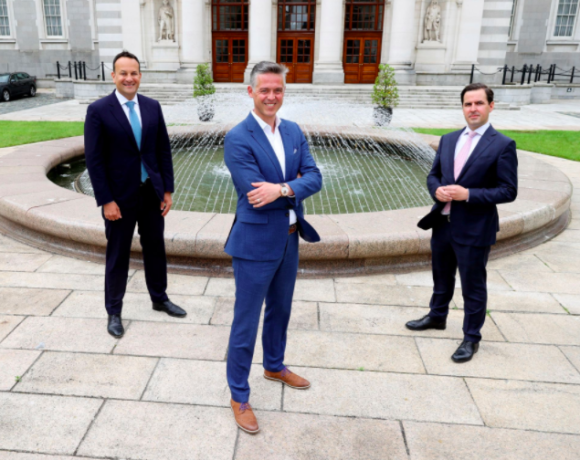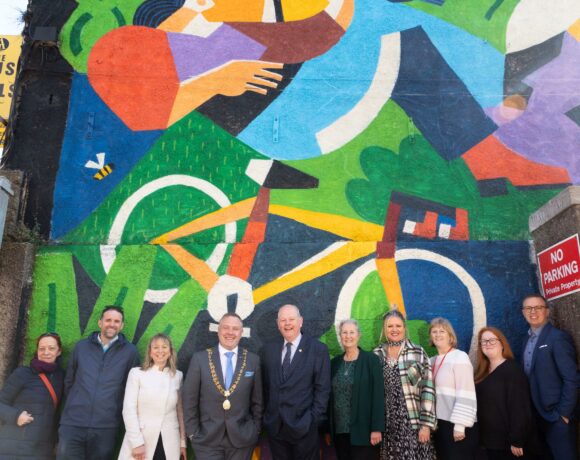An exhibition developed by two descendants of figures from Ireland’s revolutionary years working with records from the National Archives will be unveiled. The installation explores how the architectural utopias built by the newly established Free State also reflected the utopian ideals of the individuals that fought for that independence.
The Secret Space: Palimpsest is a collaboration between ANU’s co-artistic director Owen Boss and performer Genevieve Hulme-Beaman with the National Archives. It examines the role their respective great grandfathers (P.T. Daly and Batt O’Connor) played in the Irish revolutionary period. Using records held in the National Archives, the artists reflected on the idealism of their revolutionary great grandfathers as well as the idealist values of the new state revealed in modernist architecture that emerged during the early years of the new State.
In partnership with the National Archives, ANU Productions have created a bespoke installation for the foyer of the National Archives building on Bishop Street.
Batt O’Connor was a master stonemason and builder, a member of the IRB and the Irish Volunteers. During the War of Independence he was entrusted with collecting and hiding the money that would fund the fledgling Dáil Éireann. He constructed hiding places across Dublin for documents, funds and secret rooms for people on the run from the authorities. P.T. Daly was a Dublin Corporation Councillor, a founding member of Sinn Féin, the ITGWU, Irish Citizen Army, the Irish Labour Party, and a member of the Supreme Council of the IRB. In the 1970s the memoirs and private papers of Daly were destroyed by his family leaving a huge absence in the revolutionary canon. This collaboration aims to recreate the lost and hidden records of these men using the official records from the time.
When the Irish Free State was declared in 1922, the country embarked on a furious campaign of modernisation. It embraced the latest modernist architectural design and construction techniques as the country took its first steps onto the international stage as an independent nation. Two buildings are of particular interest; Ardnacrusha Power Plant (1929) and the Irish Pavilion at the New York World’s Fair (1939). The former acted as a symbol of modernisation to the national population and the latter acted as a symbol of modernisation for the global population.
The Secret Space: Palimpsest combines these new architectural forms with the secondary spaces of our built environment that were so effectively employed by Batt O’Connor and P.T. Daly during the revolutionary period. The installation also incorporates documents from its collection relating to both Batt O’Connor and P.T.Daly as well as these two representations of architectural idealism, Ardnacrusha and the Irish Pavilion.
Speaking in advance of the exhibition opening, Minister Catherine Martin, Minister for Tourism, Culture, Arts, Gaeltacht, Sport and Media, said, “as we approach the end of the Decade of Centenaries, I am again reminded of the extraordinary capacity of artists to speak to history in new and imaginative ways. Taking the personal histories of their great grandfathers, artists Owen Boss and Genevieve Hulme-Beaman interrogate their revolutionary ideals using the archival record and representing them in architectural form mirroring that of the new Free State. I am delighted to see collaborations of this nature presented in our cultural institutions.”
The exhibition is part of the Decade of Centenaries Programme 2012-2023.













